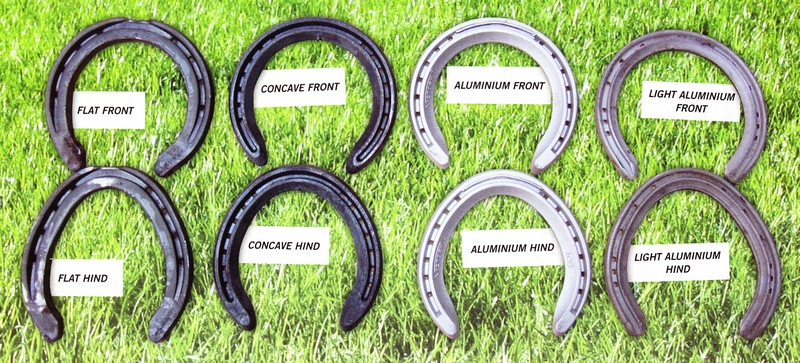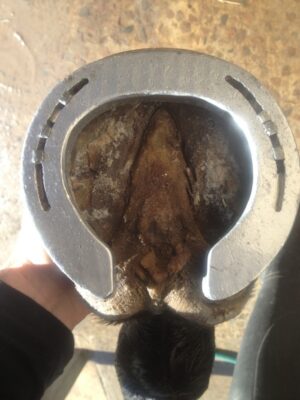It seems to happen all too often that an owner asks me for help with a problem that the horse is floundering during work or competition. That comment should alert us and lead us straight to the hooves, as ‘no hoof no horse’ is the obvious starting point.
For the moment let’s discount the barefoot philosophy, as it cannot be compared with the performance of a correctly shod horse with the right running gear.
Then let’s assume that the horses hooves have already been prepared correctly, and that the horse is not standing splayed out in front or cow hocked (toed out) behind, so that all we need to do now is to choose the appropriate normal shoes to help the performance.
This word ‘normal’ now needs to be clarified – the correctly prepared front hoof should be round or slightly oval shaped, as nature has evolved it this way in order to support the heavier front of the horse; the correctly prepared hind hoof should be more pointed at the toe and flatter along the sides, which allows for easier turning sideways and speedy propulsion to escape its predators, such as lions and tigers and bad tempered owners and farriers.
The natural hoof is of equal and symmetrical proportions and is the mirror image of the pedal bone (coffin bone) inside the hoof and also the mirror image of the white line and the normal coronary band.
Thus, shoes which have been designed with square toes, rolled toes, break over enhancement for the fronts, or square toed hinds with outside trailers and longer lateral branches, are in my opinion only bandaids to alleviate the problems which are caused by incorrect hoof preparation.
The golden rule is and always has been that anything we do which alters the ground bearing shape of the hoof from nature’s true shape, has a detrimental effect to the horse’s action by changing the stride.
So, now progressing to selecting the shoes, it should be easier to understand why we just need a normal shaped shoe.
The shoe should be as light as is possible in order to enhance the horse’s performance, and it should also be matched to the build and bone structure of the horse, for example a big bodied horse with fine leg bones doesn’t need to be shod with heavy flat shoes like a cart horse would wear.
- Flat shoes are fine for mustering and trail riding etc.
- Concave shoes are the best for competition work or endurance work.
- Aluminium concave shoes are essential for racing and the high end of competitions, where it is said that an ounce on the hoof is like a pound in the saddle.
The shoes pictured are all suitable for the average horse, but are all available in heavier gauges as required, and you will also notice they are all a regular shape to fit the normal shape of the front and hind of nearly every horse IF it has been correctly prepared.
A later article will discuss the subject of orthopaedic shoes and remedial shoes, and their appropriate uses.


